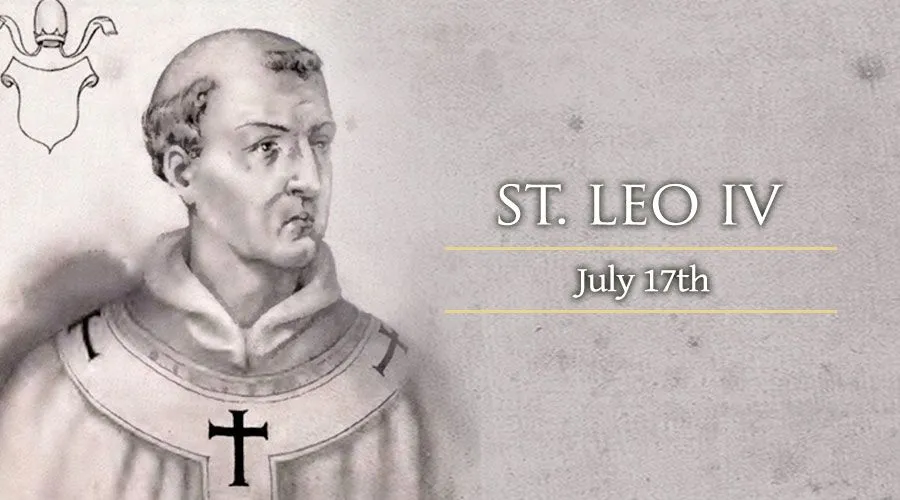Sub-Saharan Africa, 17 July, 2025 / 11:20 am (ACI Africa).
The universal Church celebrates the life of St. Leo IV on July 17. Both a Roman and the son of Radoald, Leo was unanimously elected to succeed Sergius II as Pope. At the time of his election, there was an alarming attack of the Saracens on Rome in 846, which caused the people to fear the safety of the city. Because of the tension of the situation, Leo was consecrated on April 10, 847 without the consent of the emperor.
Leo received his early education at Rome in the monastery of St. Martin, near St. Peter's Basillica. His pious behaviour drew the attention of Gregory IV, who made him a subdeacon, and he was later created Cardinal-Priest of the church of the Quatuor Coronati by Sergius II.
As soon as Leo, much against his will, became Pope, he began to take precautions against a repetitious acts of the Saracen raid of 846. He began a project to put the walls of the city into a thorough state of repair, entirely rebuilding fifteen of the great towers. He was the first to enclose the Vatican hill by a wall. In order to do this, he received money from the emperor, and help from all the cities and agricultural colonies (domus cultae) of the Duchy of Rome. The work took him four years to accomplish, and the newly fortified portion was called the Leonine City, after him. In 852 the fortifications were completed, and were blessed by the Pope with great solemnity.
It was by this Pope that the church of S. Maria Nova was built, to replace S. Maria Antiqua, which the decaying Palace of the Caesars threatened to engulf, and of which the ruins have recently been brought to light. In 850, Leo associated with Lothair in the empire of his son Louis, by imposing on him the imperial crown. Three years later "he hallowed the child Alfred to king [says an old English historian] by anointing; and receiving him for his own child by adoption, gave him confirmation, and sent him back [to England] with the blessing of St. Peter the Apostle."
In the same year, 853, he held an important synod in Rome, in which various decrees were passed for the furtherance of ecclesiastical discipline and learning, and for the condemnation of the refractory Anastasius, Cardinal of St. Marcellus, and sometime librarian of the Roman Church. Equally rebellious conduct on the part of John, Archbishop of Ravenna, forced Leo to undertake a journey to that city to inspire John and his accomplices with respect for the law. It was duing his engaging endeavour to inspire another archbishop, Hincmar of Reims, with this same reverence, that Leo died.






